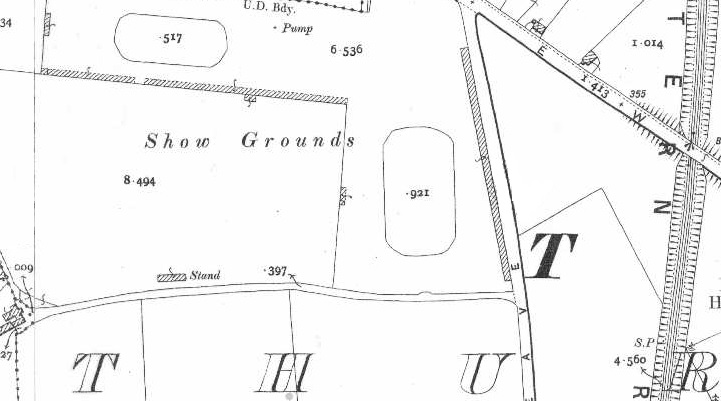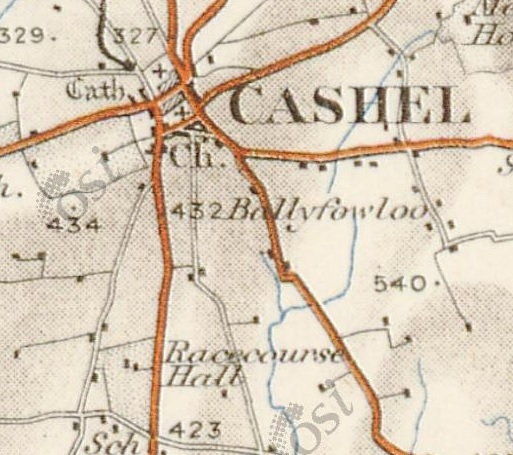By Stephen Gleeson
The Sport of Kings has a much-loved place in the hearts of Tipperary people. From the rich pastures down south, to the far north of the county, horse trainers and owners can be found. Driving from Cashel to Clonmel the statue of Vincent O’Brien is visible from the roadside. In the walled town of Fethard, on Main Street can be found, “The Fethard Horse Country Experience” which offers a place for visitors to explore the heritage and legacy more deeply. Travel to Barnane, Cloughjordan, Golden, Upperchurch, Bansha or Ballydoyle and race horses can be seen pacing the fields. The affection for horses goes way back to a time when the horse helped to plough the field or allowed a soldier to ride into or away from a battle. Since ancient times the horse has been part of our affections and is as much a part of Tipperary as the soil and the people.
In 2020, horse racing is big business and thousands of women and men in our county are employed in different roles, from jockey to stable hand, to racecourse manager, as well as many other roles within the industry. To find out the origins of the sport in Ireland – and particularly in Tipperary – I’ve been picking the brains of eminent Dr. Pat Bracken. In his book entitled, “Sport in County Tipperary 1840-1880,” he traces the history of the sport in the area. Pat says, “I go back to the Marquis of Waterford. People wanted to see him. He was kind of the poster boy. When he’d arrive people would wave their baby blue handkerchief because those were the colours he wore. He had a phenomenal, large horse racing establishment as well. Unfortunately, he was killed coming home from a hunt meet when he fell off of ‘Mayboy’, which was the name of his horse. It brought to an end a very successful period for Tipperary not just in terms of hunt but of horse racing.

“When it came to Thurles horse racing in the late 1840s, he had a carriage that brought the horses. If I had a horse back in the 1840s or 1850s and I wanted to go to, say a meet in Thurles or Templemore or Borrisoleigh, I’d have to walk my horse there. I’d have to leave the horse there beforehand so it wouldn’t be tired for the race. Lord Waterford brought a carriage that he had his horses in, just so that the horses were fresh. That was a great development in terms of keeping horses fresh and able to run.”
Races then were run over a series of heats and there might only have been two races on a given day with prizes. However, Pat explains, “you could have six race heats and a horse might have to win two heats before it could take part in the actual race. They would build up to the actual race. If two horses won their heats, they would have to race again to see who’d win. The horse would be so tired that it would sometimes be down to a walk or a canter. Sometimes one horse mightn’t be able to make it to the finish so the other horse just had to walk over the course. One horse could just walk over the course to get the prize. So therefore, we got the term ‘walkover’. A walkover now in sport is when another team doesn’t show up but we got that term from horse racing”.
Across Tipperary, horse racing became an industry and meets were called much like sports fixtures today. People travelled from all over the country to attend horse racing meets and it was a prosperous time for the host town or village. Pat explains why: “Horse racing was the big day out for a town. The noted course at the time was in Cashel; out the Ardmayle Road was where principal course was and it drew big crowds. It was like Munster final day for any town that had horse racing in the 1850s, 60s and 70s. If you think about it, there was no other sporting occasion like it. You might have a cricket match but the horse racing was the big thing that everybody could go to. If it was a sport that went on behind an estate wall, only the invited few could go to it, but everybody could go horse racing.
“If you went into the inner ring you could pay more and sit inside near the stand or near the parade ring. There was a tented village all round. People travelled there to sell drink. You had sideshows and entertainment shows. Confidence and trick games and stuff like that as well. There was a lot of drink and food and it was a big occasion for everybody. It brought a lot of money into the town. Cashel had a lot of pedigree in it. Thousands descended upon the host town of the event to partake, party and enjoy the spectacle.”
This practise changed though, as the decades went on and the industry changed and as more and more places tried to host a racing meet. Eventually, it reached saturation point. “As with all events,” Pat continues, “maybe you can get too much of it and the whole thing becomes swamped with events. That’s what happened with horse racing. There ended up being too many race meetings with too little prize money so therefore the quality of horses attending wasn’t great and the bubble burst, so to speak. You had Nenagh, the Grennanstown races, another in Borrisokane and similar in other areas. The Thurles racecourse is nigh on where it is now but it shortened a bit, it was mapped on the 1840 ordnance survey map, so therefore it goes back that far. Cashel had a big racecourse in existence.”

There are a few townlands in existence in Ireland that bear the names – in Cashel, in Kilsheelan. Again, according to Pat, that lets us know what it’s pedigree and heritage was. Horse racing was very much instrumental.

“It’s no small coincidence that it’s still successful and vitally important to the economy of today,” Pat continues. “It’s very much to do with the limestone base of the soil and the horsemanship and that pedigree. It’s not something that happened overnight in Tipperary. There’s a long history associated with the industry with Tipperary that goes back into the 17th century at least and maybe further back.”
And so, the present-day rich tradition of horse racing is merely an expression of the passions that have been a part of life in Tipperary for centuries. As it was then, so it is today – people enjoy a flutter on the outsider or study the form closely. The racing industry today is the culmination of all the time that has gone into the sport in the past and the love of horses, and of racing, looks set to continue.





